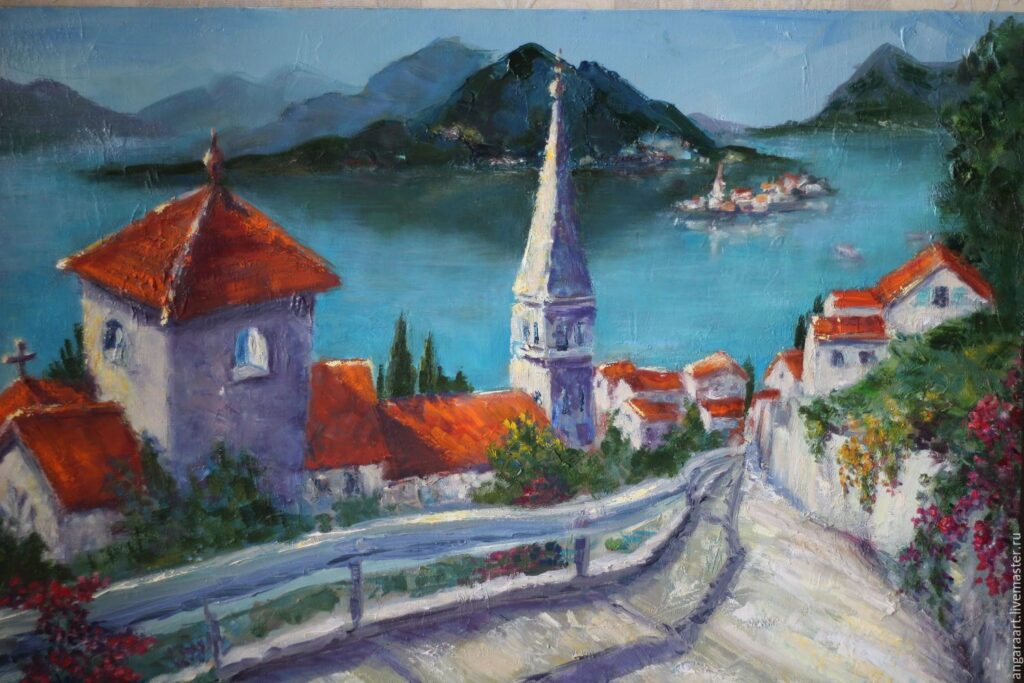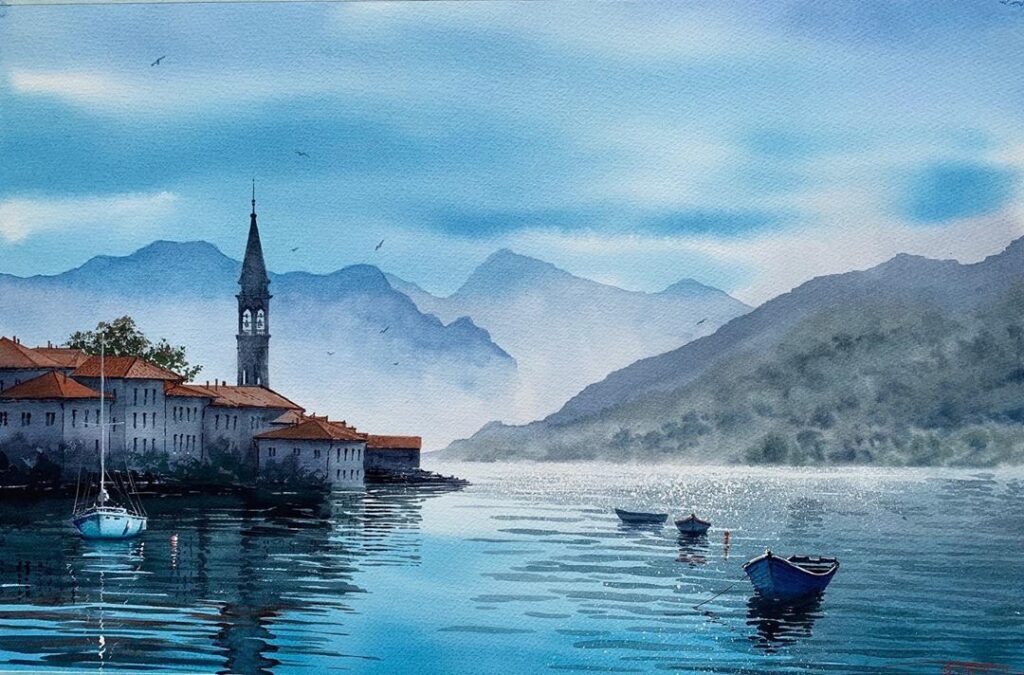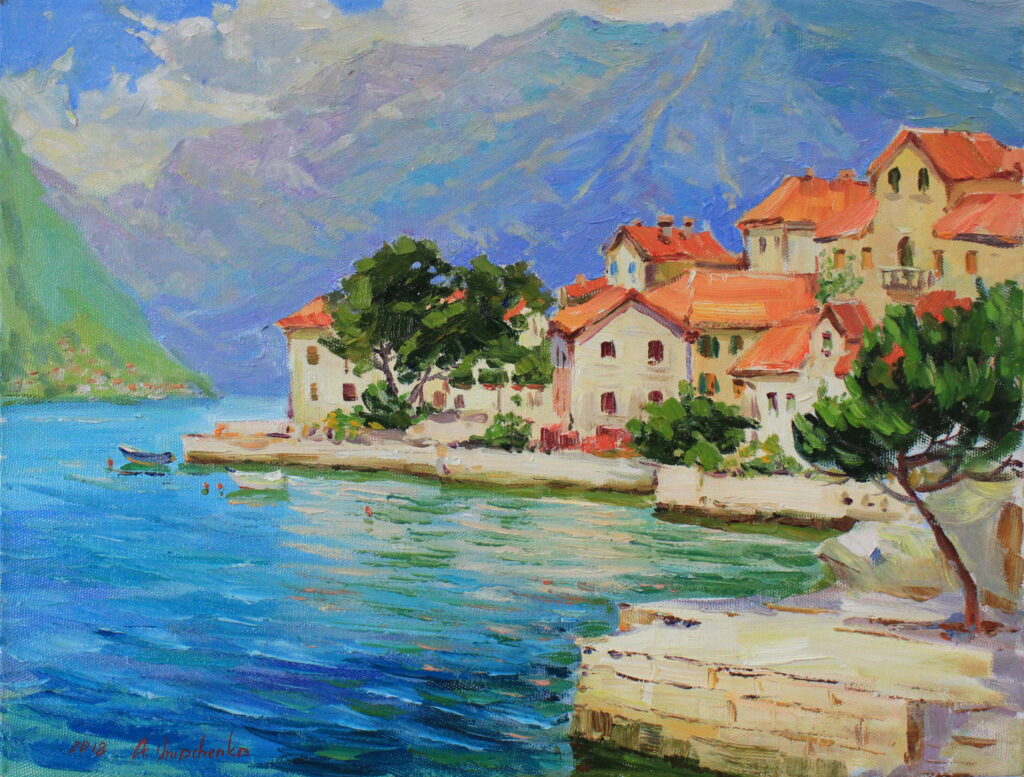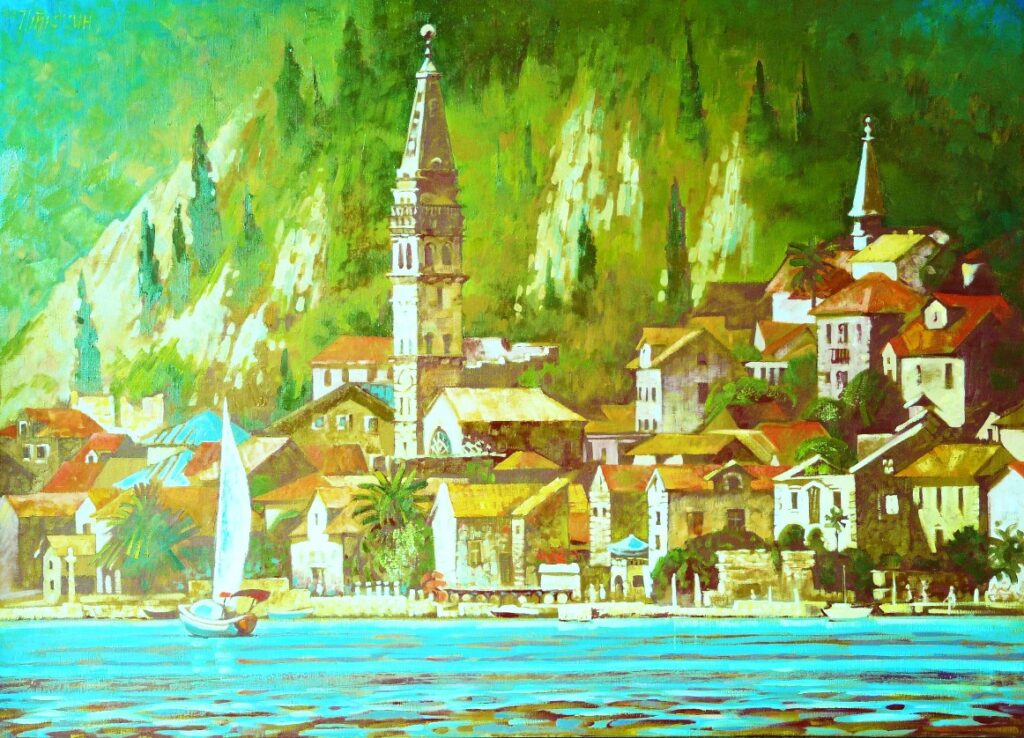Historical Context of Montenegro Modern Art Development
Montenegro, though a small country in the Balkans, boasts a rich tapestry of art and culture. The evolution of Montenegro Modern Art can be traced back to the late 19th and early 20th centuries when the nation was undergoing significant socio-political changes. This period marked the advent of urbanization, intellectual movements, and a collective aspiration for modernity.
In the context of art, Montenegro’s progression wasn’t isolated. The influences from neighboring countries, combined with global art movements like Impressionism and later, Abstract art, found their way into Montenegrin canvases. However, Montenegro Modern Art retained its distinctive character by blending these external influences with local folklore, traditions, and landscapes.
The World Wars significantly impacted the trajectory of Montenegro Modern Art. Artists, during and post these conflicts, portrayed the harsh realities, sorrows, and hopes of their nation. This era of art was not just about aesthetic appeal but also became a medium of communication and reflection for the nation’s sentiments.
Post-war, Montenegro’s art scene witnessed a resurgence with new art schools, galleries, and platforms that celebrated and promoted Montenegrin artists. This era gave birth to several notable figures who are considered pillars in Montenegro Modern Art. Their works, while echoing global art trends, showcased a Montenegrin soul – a blend of the country’s rugged landscapes, rich history, and evolving societal norms.
In conclusion, Montenegro Modern Art’s historical context is a rich tapestry of external influences, internal reflections, and a constant search for identity in an ever-evolving world. Today, it stands as a testament to the nation’s resilient spirit and its ever-persistent drive towards modernity while honoring its roots.

Main Directions and Styles in Montenegro Modern Art
Montenegro Modern Art is a testament to the country’s rich cultural tapestry and its ability to adapt and evolve. This evolving art form has seen various influences, both local and international, molding its identity. As a result, several dominant styles and directions have emerged, each showcasing a unique facet of Montenegrin culture and perspective.
One of the most notable styles in Montenegro Modern Art is neo-expressionism. This style often embodies strong, emotive, and sometimes raw depictions. Montenegrin neo-expressionists use bold strokes, vibrant colors, and often integrate traditional symbols to convey the passion and soul of their homeland.
Abstract art also holds a significant place in the Montenegrin art scene. Diverging from traditional forms, this direction leans towards a more conceptual and non-representational approach. Montenegrin artists have harnessed abstract art to explore and portray complex emotions, political sentiments, and societal changes, making it a pivotal style in reflecting the country’s dynamic transition periods.
Minimalism, though globally known for its simplistic nature, has been adopted and adapted in Montenegro Modern Art to convey profound narratives using limited elements. Montenegrin minimalistic art often incorporates local materials and hues, merging global concepts with a touch of local essence.
Lastly, mixed media and installations have started gaining prominence in recent years. These avant-garde forms allow artists to break free from traditional canvases, employing various materials and even incorporating technology. This direction reflects Montenegro’s blend of history and modernity, making art more interactive and thought-provoking.
In essence, Montenegro Modern Art, while drawing inspiration from global trends, remains firmly rooted in its own history and experiences. Each style and direction not only mirrors the artistic prowess of Montenegrin artists but also the nation’s journey through time, balancing tradition with innovation.

Prominent Artists and Their Contribution to Montenegro Modern Art
Montenegro Modern Art has witnessed a surge in recognition and appreciation, both locally and internationally. A significant part of this evolution can be attributed to the relentless efforts and unique vision of a few standout artists who have carved a niche for themselves and their homeland on the global art canvas.
One of the pioneers in the realm of Montenegro Modern Art is Milena Živković. Her abstract works, rich in symbolism and vibrant hues, delve into the heart of Montenegrin landscapes and traditions. Živković’s paintings are a reflection of Montenegro’s spirit, juxtaposing its rugged terrains with the softness of its Adriatic coast.
Another significant name is Dragan Karadžić, known for his neo-expressionist portraits. Karadžić captures the soul of his subjects, often portraying the common Montenegrin citizen’s emotions, dreams, and aspirations. His works have been pivotal in elevating the human element in Montenegro’s modern art narrative.
Jelena Tomašević, on the other hand, has introduced Montenegro to the avant-garde realm of mixed media and installations. Her innovative approach, blending traditional art forms with contemporary mediums, embodies the essence of Montenegro Modern Art’s growth trajectory. Tomašević’s installations, particularly, resonate with Montenegro’s transition from its rich historical past to a future brimming with possibilities.
In conclusion, the contribution of these artists, among many others, to Montenegro Modern Art cannot be overstated. Through their unique styles and perspectives, they have managed to encapsulate Montenegro’s essence, representing its heart and soul to the world. Their works serve as a testament to the region’s evolving artistic spirit, ensuring Montenegro’s spot on the global art map.

Impact of Montenegro Modern Art on the Global Cultural Scene
In recent decades, the global art community has borne witness to a dynamic force emanating from the Balkans – the undeniable influence of Montenegro Modern Art. As artists from this region present their work on the world stage, the uniqueness and depth of their perspectives have carved a niche in the heart of the global cultural arena.
Montenegro Modern Art, characterized by its rich fusion of history, tradition, and innovative techniques, offers a refreshing take on contemporary art. The allure lies in its ability to convey profound narratives, intricately weaving Montenegrin folklore, landscapes, and modern-day reflections. This art form represents a bridge between the country’s turbulent past and its optimistic future, all while resonating with universal themes of identity, resilience, and transformation.
International exhibitions have increasingly showcased Montenegrin artists, reflecting the world’s growing interest in this unique art movement. These exhibitions have not only provided a platform for Montenegro’s artists but have also facilitated a two-way dialogue. Global audiences gain insight into the Montenegrin psyche, while Montenegrin artists receive exposure to diverse artistic practices and critiques.
Furthermore, Montenegro Modern Art’s influence extends beyond galleries and museums. It has inspired international artists to explore new mediums and delve deeper into their indigenous histories, mirroring the Montenegrin approach. This cross-cultural exchange has enriched the global art tapestry, infusing it with fresh motifs and perspectives.
In essence, Montenegro Modern Art, while rooted in its national identity, speaks a global language. Its surge on the international scene underscores the power of art to transcend borders, fostering mutual appreciation and understanding in an increasingly interconnected world.

